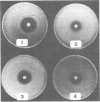Abstract
A Fusarium metabolite, T-2 toxin, inhibits the growth of Saccharomyces carlsbergensis and Saccharomyces cerevisiae. The growth inhibitory concentrations of T-2 toxin were 40 and 100 μg/ml, respectively, for exponentially growing cultures of the two yeasts. S. carlsbergensis was more sensitive to the toxin and exhibited a biphasic dose-response curve. Addition of the toxin at 10 μg/ml of S. carlsbergensis culture resulted in a retardation of growth as measured turbidimetrically, after only 30 to 40 min. This action was reversible upon washing the cells free of the toxin. The sensitivity of the yeasts to the toxin was dependent upon the types and concentrations of carbohydrates used in the growth media. The sensitivity of the cells to the toxin decreased in glucose-repressed cultures. These results suggest that T-2 toxin interferes with mitochondrial functions of these yeasts.
Full text
PDF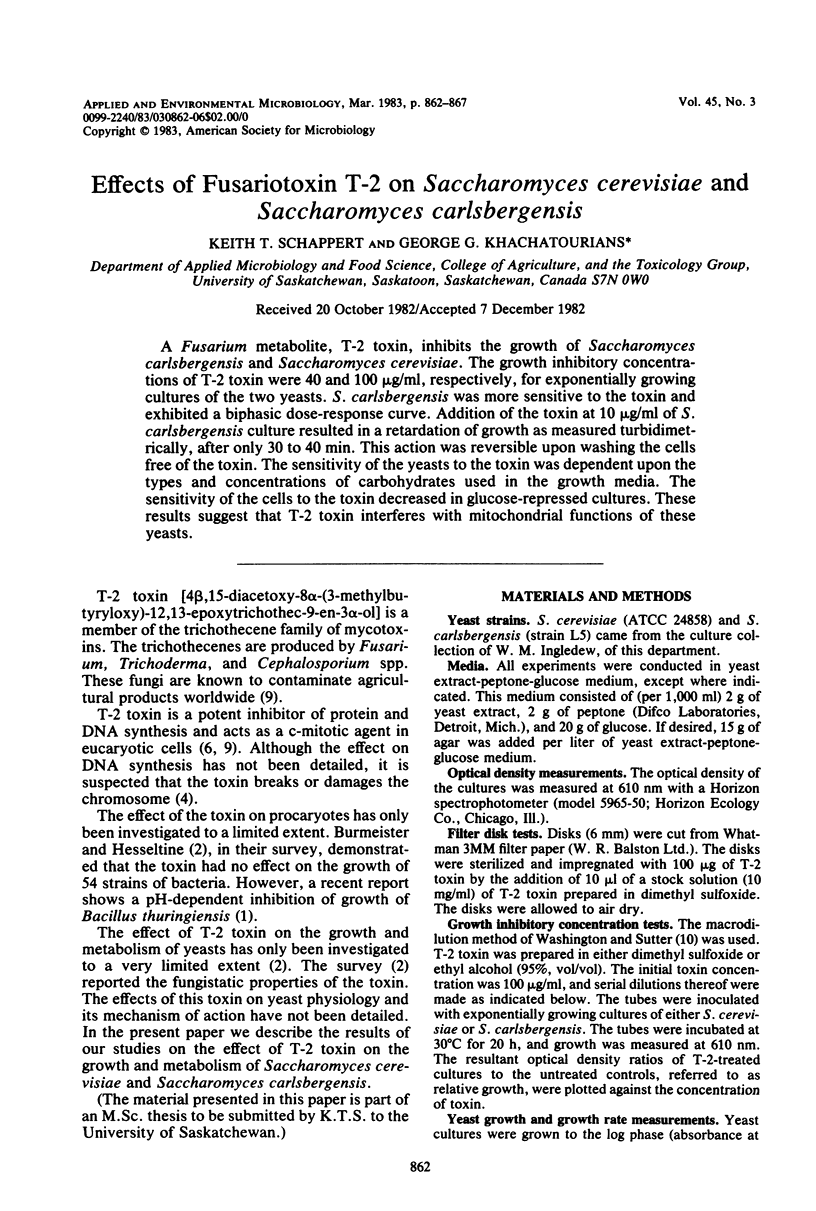
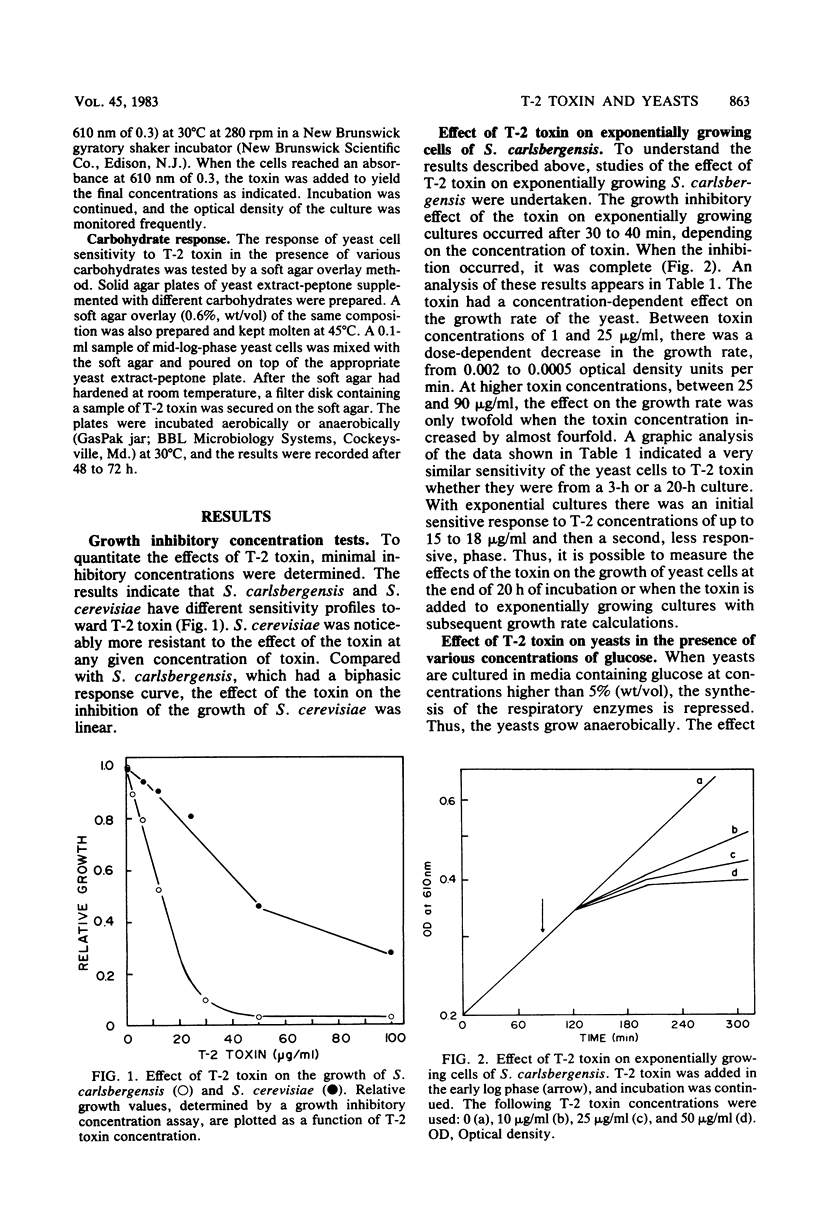
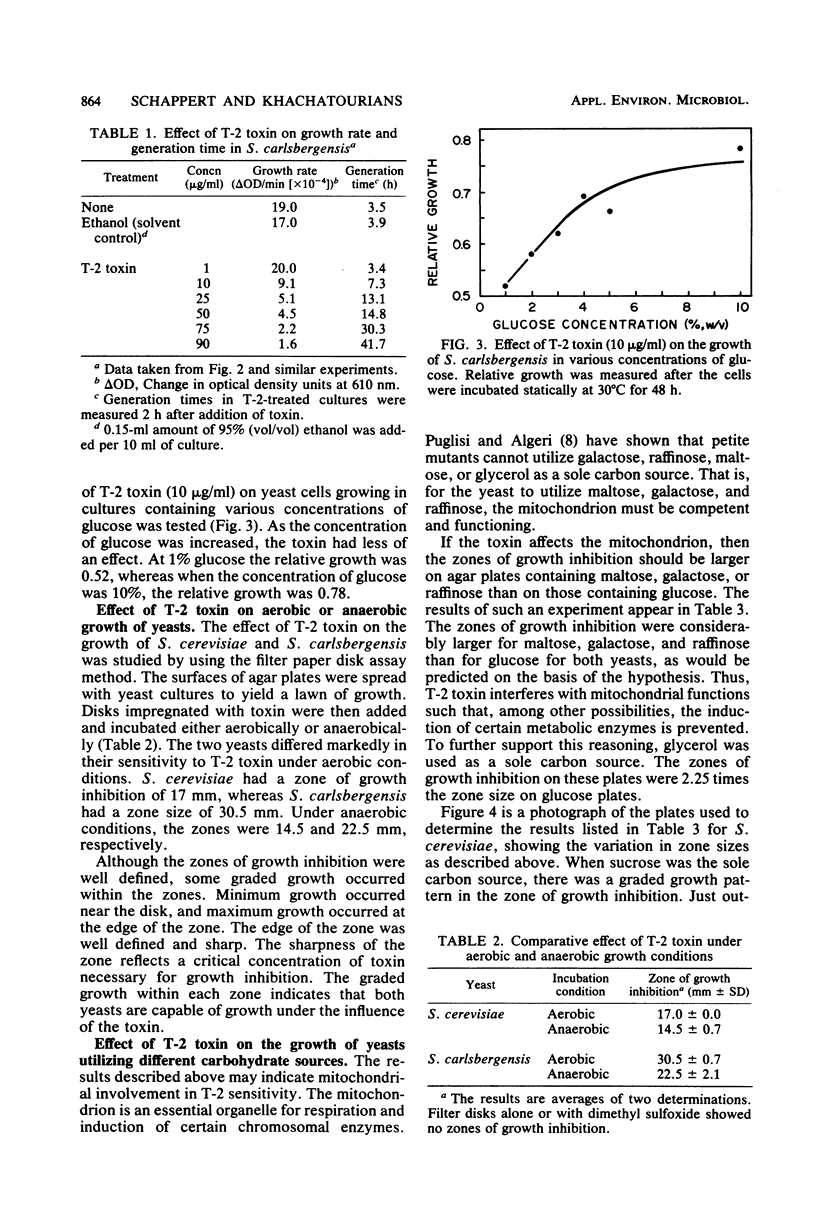
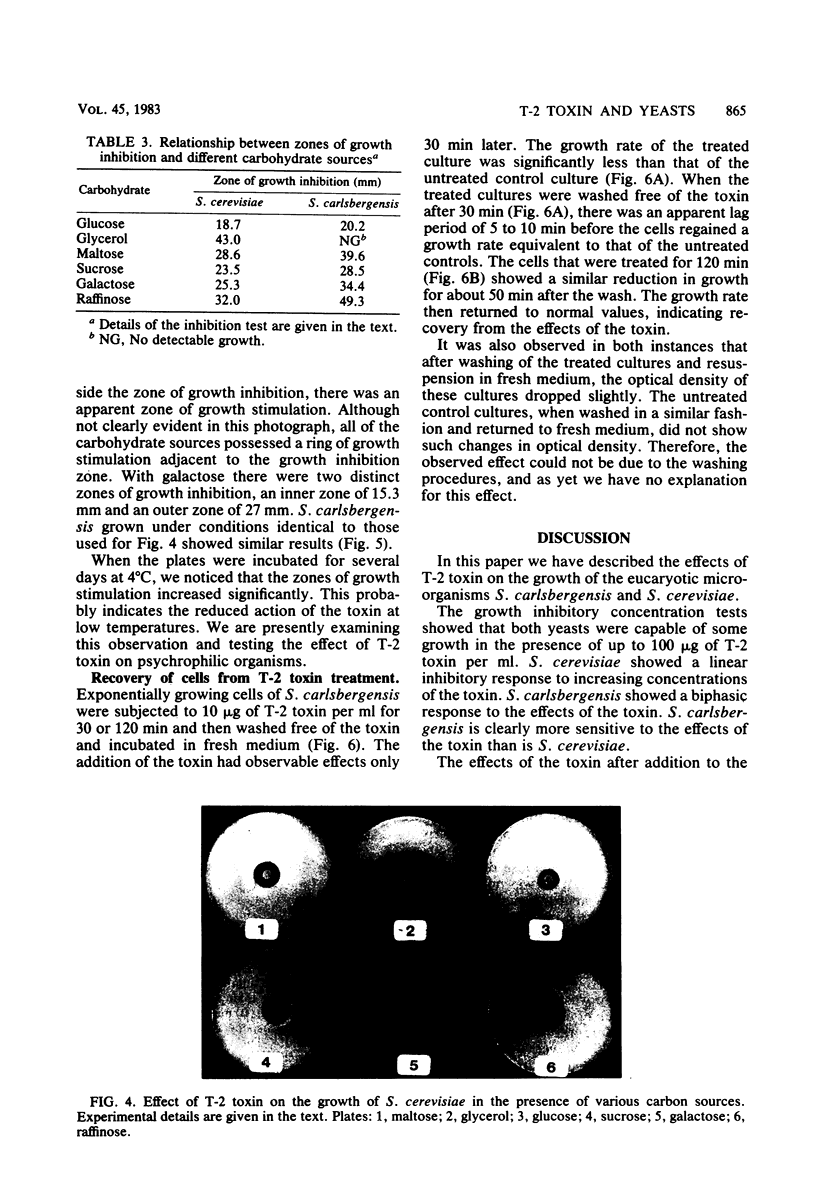
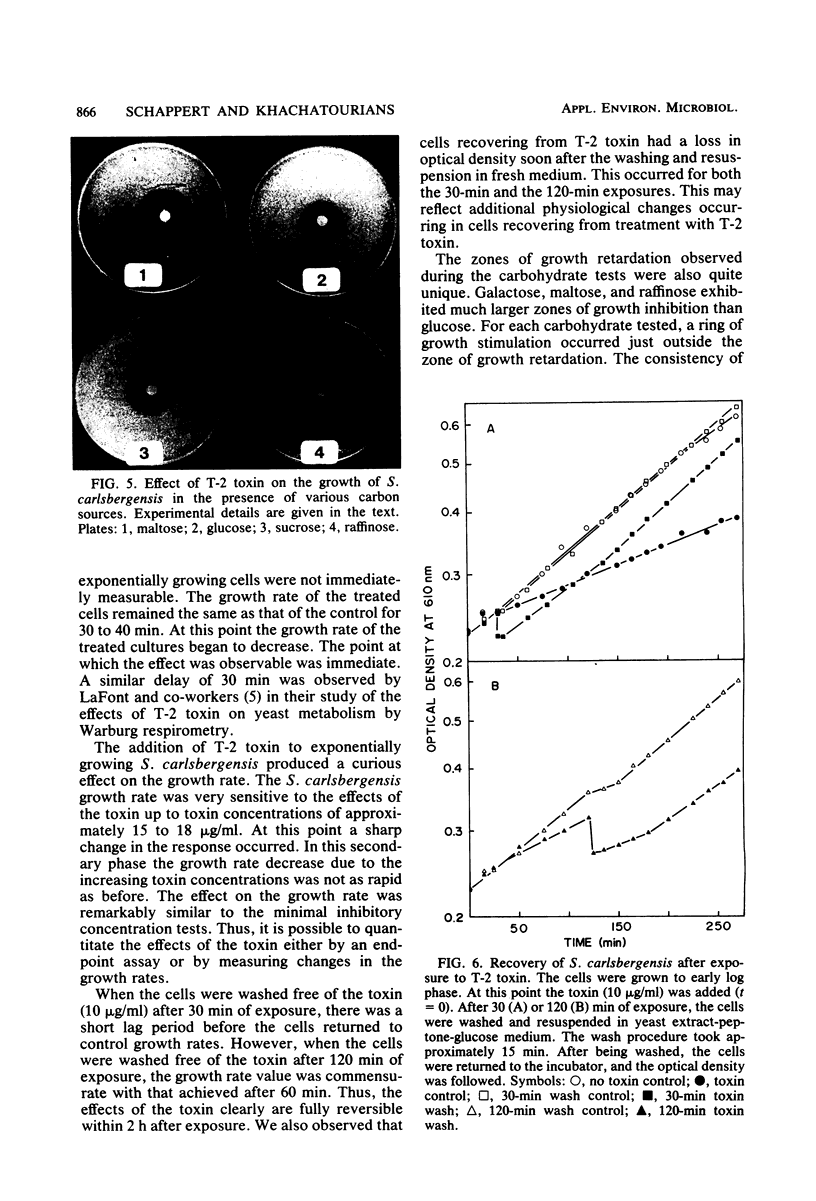
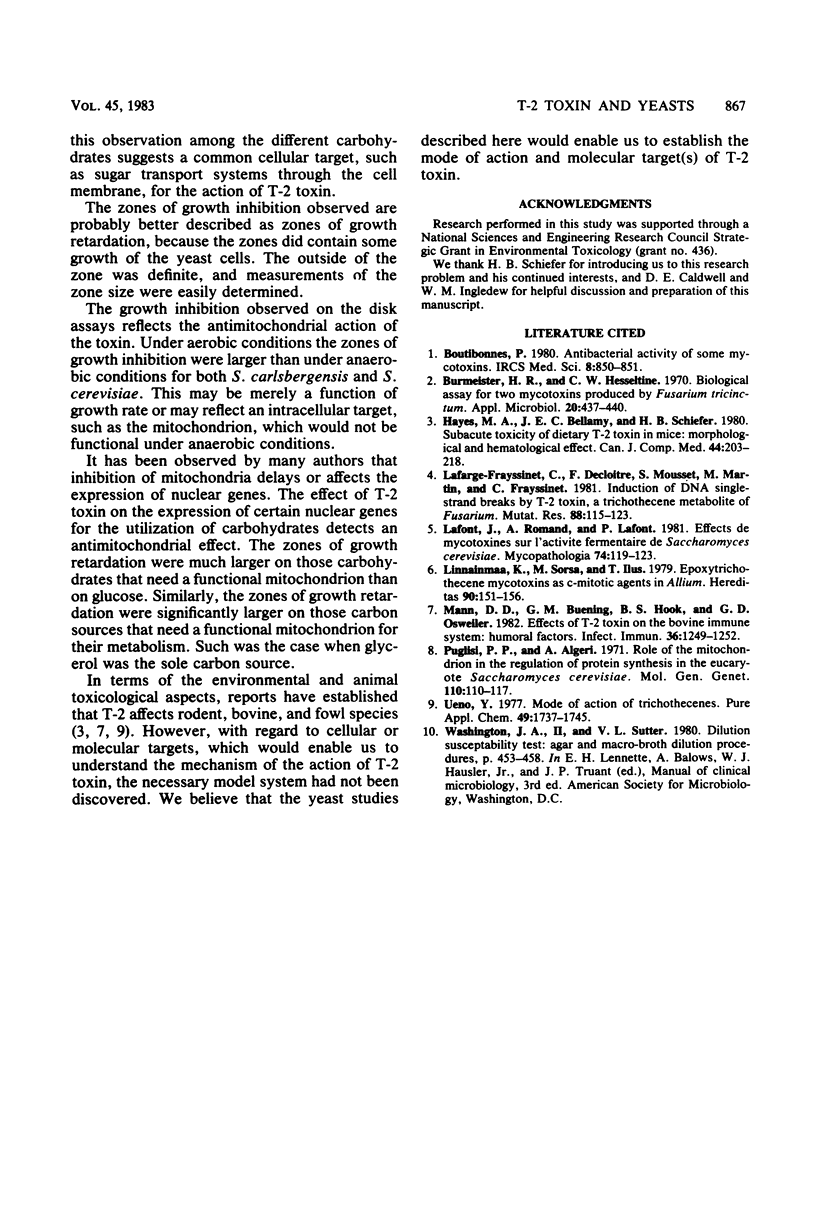
Images in this article
Selected References
These references are in PubMed. This may not be the complete list of references from this article.
- Burmeister H. R., Hesseltine C. W. Biological assays for two mycotoxins produced by Fusarium tricinctum. Appl Microbiol. 1970 Sep;20(3):437–440. doi: 10.1128/am.20.3.437-440.1970. [DOI] [PMC free article] [PubMed] [Google Scholar]
- Hayes M. A., Bellamy J. E., Schiefer H. B. Subacute toxicity of dietary T-2 toxin in mice: morphological and hematological effects. Can J Comp Med. 1980 Apr;44(2):203–218. [PMC free article] [PubMed] [Google Scholar]
- Lafarge-Frayssinet C., Decloitre F., Mousset S., Martin M., Frayssinet C. Induction of DNA single-strand breaks by T2 toxin, a trichothecene metabolite of fusarium: effect on lymphoid organs and liver. Mutat Res. 1981 Feb;88(2):115–123. doi: 10.1016/0165-1218(81)90010-0. [DOI] [PubMed] [Google Scholar]
- Lafont J., Romand A., Lafont P. Effets de mycotoxines sur l'activité fermentaire de Saccharomyces cerevisiae. Mycopathologia. 1981 May 8;74(2):119–123. doi: 10.1007/BF01259467. [DOI] [PubMed] [Google Scholar]
- Linnainmaa K., Sorsa M., Ilus T. Epoxytrichothecene mycotoxins as c-mitotic agents in Allium. Hereditas. 1979;90(2):151–155. doi: 10.1111/j.1601-5223.1979.tb01303.x. [DOI] [PubMed] [Google Scholar]
- Mann D. D., Buening G. M., Hook B. S., Osweiler G. D. Effect of T-2 toxin on the bovine immune system: humoral factors. Infect Immun. 1982 Jun;36(3):1249–1252. doi: 10.1128/iai.36.3.1249-1252.1982. [DOI] [PMC free article] [PubMed] [Google Scholar]
- Puglisi P. P., Algeri A. Role of the mitochondrion in the regulation of protein synthesis in the eucaryote Saccharomyces cerevisiae. Mol Gen Genet. 1971;110(2):110–117. doi: 10.1007/BF00332642. [DOI] [PubMed] [Google Scholar]




